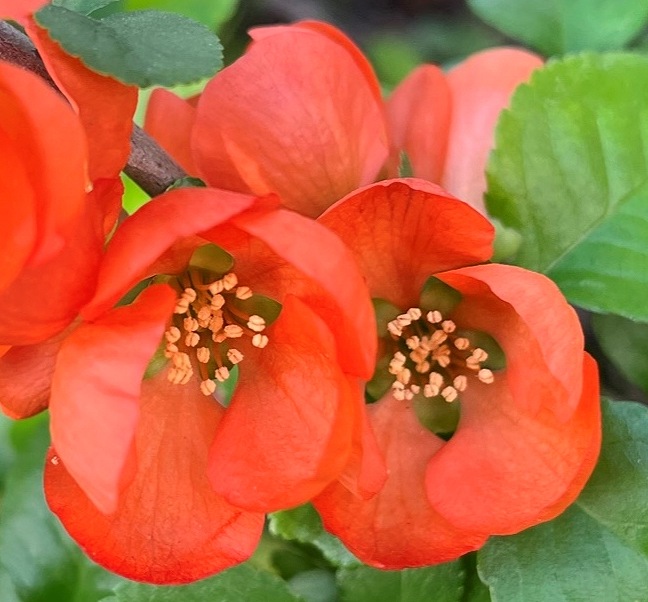ボケは春、葉が芽吹くよりも先に花が咲きます。花は丸っこい5弁花。秋に色づく果実はジャムや果実酒に加工したり、生薬に用いられます。
In spring, the Flowering quince bloom before the leaves sprout. The flowers are round five-petaled flowers. Fruits that are colored in autumn are processed into jam and fruit liquor, and are used as crude drugs.
【仮名】ボケ, クサボケ
【和名】木瓜, 草木瓜
【英名】Flowering Quince, Japanese Quince
【学名】Chaenomeles
【誕生】02/ 04, 02/ 05, 02/ 17, 12/ 28
【開花】03, 04月
【花色】White, Pink, Red, Orange
ボケ
ボケの生態

ボケはバラ科の落葉低木です。原産地は中国大陸で、日本へは平安時代に観賞用で渡来。日当たりと水はけの良いところを好み、本州から四国、九州にかけて植栽されました。栽培品種は多く、200種類以上。開花時期によって四季咲き、寒咲き、早咲き、中咲き、晩咲きがあります。
ボケの名前
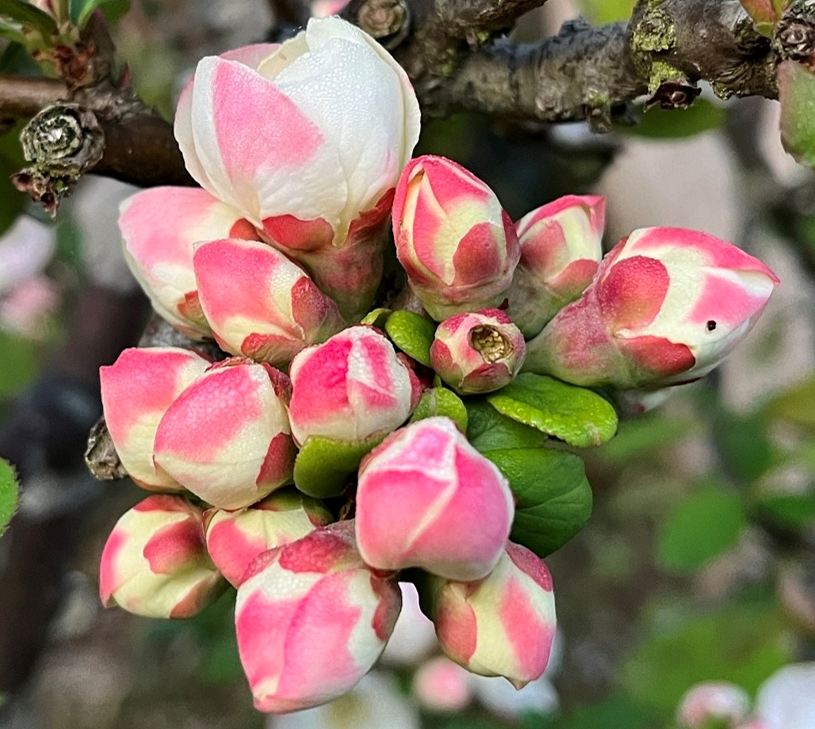
ボケの名前は果実がウリに似ているので「木瓜」。もともとの呼称は「モケ」「モクカ」「ボックワ」でしたが、時とともに「ボケ」へと転じました。そのほか、初冬に花を咲かせるものが「寒木瓜」、日本の在来種が「草木瓜」。果実を乾燥させて生薬にしたものは「木瓜実」です。
ボケの形態
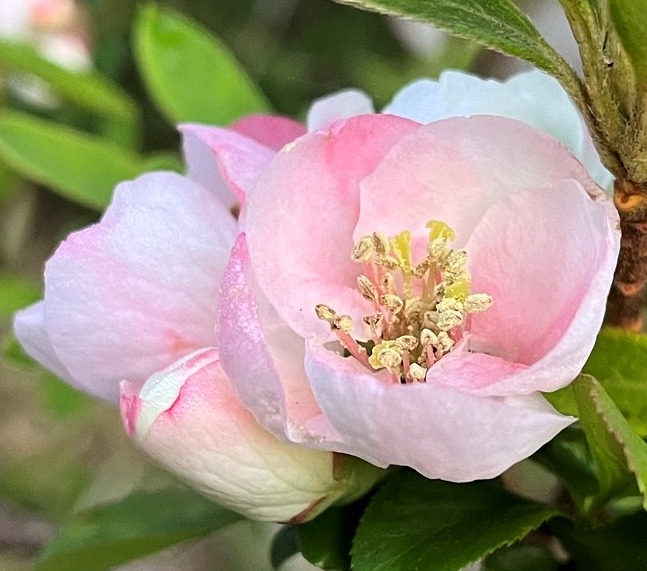
ボケは樹高が1~2m。樹形は叢生で、茎がよく枝分かれします。葉は楕円形で互生。花は春、葉が芽吹くよりも先に咲きます。丸っこい5弁花で、雄性花と雌性花の2種類。花後は秋に果実を結びます。青色の果皮が黄色味を帯び、やがて落果。冬芽は葉芽が三角形、花芽が球形です。
ボケの果実
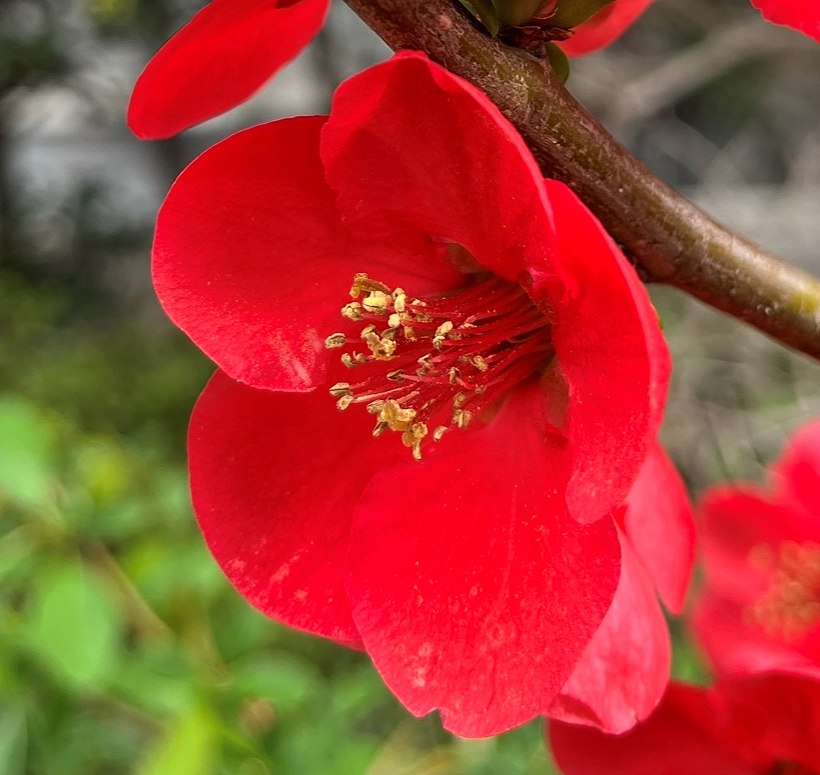
ボケの果実はクエン酸、酒石酸、リンゴ酸や果糖が含まれます。しかし、果肉が硬く、酸味や渋味も強いので、生食は不向き。そのため、ジャムや果実酒に加工したり、生薬に用いられます。効用は補血、強壮、疲労回復、咳止めのほか、食あたり、筋肉のひきつり、暑気あたりにも。
ボケの在来種
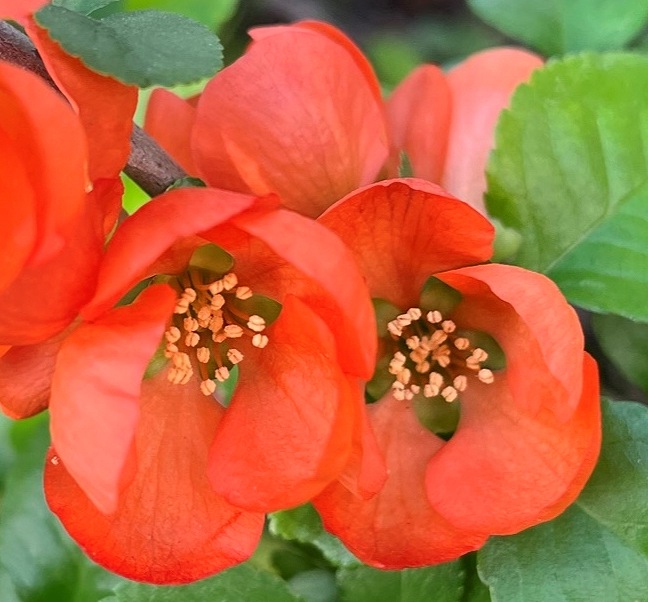
日本の在来種「クサボケ」は本州の関東以西、四国、九州に分布。日当たりの良い山野に生えています。ボケより一回り小さく、枝が斜面を這い上がるので、見た目は草のよう。しかし、ボケと同じように花が咲いて果実が熟します。生薬名は「和木瓜」。同じような薬効があります。
Flowering Quince
Flowering quince is a deciduous shrub of the Rosaceae family. The place of origin is Mainland China, and it came to Japan for ornamental purposes during the Heian period. It was planted from Honshu to Shikoku and Kyushu, preferring good sunlight and drainage. There are many cultivars, more than 200. Depending on the flowering time, there are four seasons, cold, early, medium, and late.
The name of the quince is “Tree Meron” because the fruit resembles a melon. Originally the names were “Moke”, “Mokuka”, and “Bokwa”, but over time they changed to “Bokeh”. In addition, the one that blooms in early winter is “Kan Bokeh”, and the native species of Japan is “Kusa Bokeh”. The dried fruit that is used as a crude drug is “Mokkajitsu”.
The height of the Flowering quince is 1-2m. The tree shape is crowding and the stems are well-branched. The leaves are oval and alternate. The flowers bloom in spring before the leaves sprout. It is a round five-petaled flower, and there are two types of flowers, male and female. After flowering, it bears fruits in autumn. The blue peel becomes yellowish and eventually falls. The winter buds have triangular leaf buds and spherical flower buds.
Flowering quince fruits include citric acid, tartaric acid, malic acid and fructose. However, the flesh is hard and the acidity and astringency are strong, so raw food is not edible. Therefore, it is processed into jam and fruit liquor, and used as a crude drug. In addition to blood supplementation, tonicity, fatigue recovery, and cough medicine, it is also useful for food poisoning, muscle tightening, and heat.
The native Japanese species “Kusa Bokeh” is distributed west of Kanto, Shikoku, and Kyushu in Honshu. It grows in sunny mountains. It is one size smaller than the bokeh, and the branches crawl up the slope, so it looks like grass. However, the flowers bloom and the fruits ripen, just like the quince. The crude drug name is “Wamokka”. It has a similar medicinal effect.

